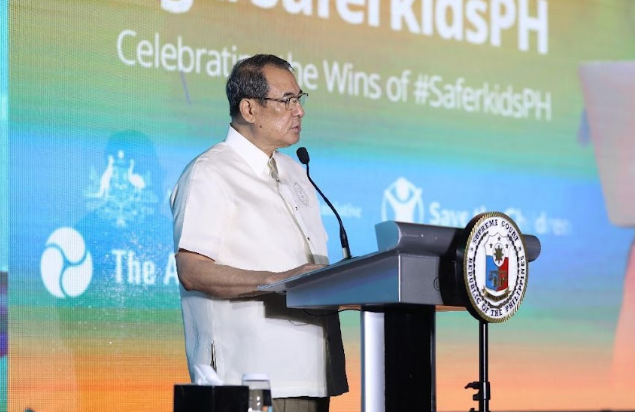A 2022 study found that 2 in 10, or around 2 million Filipino internet users aged 12 to 17, had experienced online sexual abuse and exploitation of children (OSAEC). Less than three percent reported the abuse. But encouraging signs of progress have emerged, with the National Center for Missing and Exploited Children (NCMEC) reporting a drop in cyber tip reports from the Philippines from over 2.7 million in 2023 to just over 1.7 million in 2024.
This was achieved by the multisectoral consortium SaferKidsPH, funded by the Australian Government and implemented by UNICEF, Save the Children Philippines, and the Asia Foundation. But for these organizations, the fight does not end here. As the program concludes this year, they are calling on the Philippine government to continue strengthening child protection.
“We are incredibly proud of the progress SaferkidsPH has made in strengthening the child protection system in the Philippines, showing how collaboration, commitment and tenacity of government, civil society, international partners, and the children and their families can address the complex challenge of OSAEC,” said Behzad Noubary, UNICEF Philippines Representative Ad Interim. “Let us build on this momentum to fight against a hidden, largely invisible crime that threatens our children’s safety. UNICEF remains committed to supporting the government in strengthening the child protection system.”
The SaferKidsPH program supported key laws and policies, including the Anti-OSAEC and the Anti-Child Sexual Abuse or Exploitation Materials (CSAEM) Act (Republic Act 11930), and policies that help law enforcers in handling OSAEC cases. Local service providers and community members were trained to prevent and respond to OSAEC, while millions were reached through social media campaigns about positive behaviors online. SaferKidsPH actively involved children and youth and partnered with the private sector to establish child protection initiatives.

Chief Justice Alexander Gesmundo described SaferKidsPH as a “beacon of hope” in protecting children from OSAEC. He reiterated the Supreme Court’s commitment to continuing the work by enhancing judicial processes for children and vowed to sustain and expand the impact of the consortium’s initiatives to ensure that “every Filipino child grows up in a world where their safety, dignity, and potential are protected.”
The SaferKidsPH consortium is confident that the initiatives turned over to the Philippine government will be sustained and expanded to ensure a lasting impact for Filipino children.



